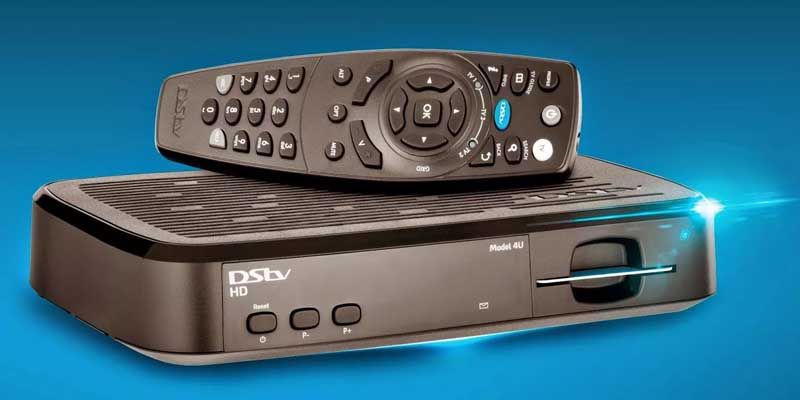DStv signal problems can be caused by faulty connections, dish alignment, and bad weather. To fix DStv signal problems then you need to make sure the cables are connected properly and the dish is correctly aligned.
If your television displays errors like DStv no signal found, DStv signal strength 0, DStv error- no signal due to bad weather, and any other errors. Then, you need to follow the following fix solutions below.
Fix faulty connections
Poor connection of the cables from the dish to the decoder can interrupt the transfer of waves from the dish to the decoder. This will result in poor signal strength or no signal errors. To fix this.
- Check for any loose DStv cables and make sure they are firmly connected.
- Make sure the F-type connectors are correctly connected to the LNB.
- Ensure the F-type connectors are correctly and firmly connected to the decoder ports.
- Make sure that the F-type connecters are correctly connected with the coaxial cables.
- Ensure the coaxial cables are in good condition.
Fix incorrect Alignment of the dish
Before disturbing the alignment of the dish, make sure that the LNB is in good condition. If the LNB is at fault it may lead to DStv no signal found error, which means you need to replace it first.
If the signal is not restored the follow the following steps.
- Make sure the arms are not broken or rusted. If broken or rusted, then replace the arms.
- Check all the bolts if they are loose. In case any bolt is loose, make them tight.
- Adjust your DStv satellite dish properly by adjusting the horizontal and elevation angle. This will need to be done using a signal detector.
Read Also: How to check your DStv account number
How to fix DStv signal problems due to bad weather
Bad weather conditions may cause DStv error- no signal due to bad Weather. It may also cause the DStv signal problem on certain channels.
To fix this problem you can try the following tips.
- Make sure that your DStv signal strength is above 90% during normal weather conditions. This will increase immunity during bad weather conditions.
- Make sure the dish is installed closer to where you are going to place the decoder. Signals get lost with distance.
- Make sure there are no cuts on the cable that may allow rainwater. This may cause shocks and signal loss.
- Cover the LNB with plastic or a bottle to prevent water from entering the LNB components.
- Cover or insulate the F-type connectors connecting to the Low-Noise Block Downconverter (LNB).
How to fix DStv signal problems by rebooting
A quick reboot of your decoder may help fix multiple problems such as scrambled channels. Scrambled channels may also cause a DStv signal problem error. This is because DStv keeps searching for signals and other decoder errors which only require a restart to work perfectly.
To reboot your DStv decoder, continuously press the power button. Rebooting takes a while; this means you need to ensure a steady power supply and be ready to wait.
How to check DStv signal strength
Monitoring your DStv signal strength may help to identify any fault and fix it before the signal is fully lost. These are the steps to follow to check your DStv signal strength.
- Click the HELP button on your remote control.
- Choose the general information option.
- Then select the Tuner Status option.
- After that, your DStv signal strength and quality will be displayed on your television screen.
Read Also: How to reactivate DStv after making payments
How to improve DStv signal strength
If you have a strong signal strength you may enjoy immunity during harsh weather conditions. And these are some of the things that may help improve or maintain your DStv signal strength.
- Cut down trees or prune trees that may cause obstruction of the signals.
- Do not install your DStv satellite dish between tall buildings.
- Reposition your DStv satellite dish in case a tall building is coming on its way.
- If you are using a polar mount for your dish, ensure the polar is upright.
- Ensure your DStv satellite dish is properly aligned and tightened to the host.
- Align your LNB correctly at a skewed angle in relation to the polarity of the signal, your local position, and the selected satellite.
- Ensure proper connection of the F-type connector on the LNB and the decoder.
- Replace any fault LNB, F-type connector, and cables.
- If you are using more than one television, you may need to buy a DStv signal booster or amplifier.
- Always monitor your DStv signal strength settings to know when it starts losing strength.
Conclusion
If you have tried all the above fix solutions and you still have a problem with your signal, then you must call an accredited DStv installer to come and fix the problem.
The installer will perform advanced diagnostics to identify the problem. You can also call the installer if you do not want to perform the above fix but doing it yourself is preferable since it helps cut the cost.
Read Also: How to watch DStv from your phone
